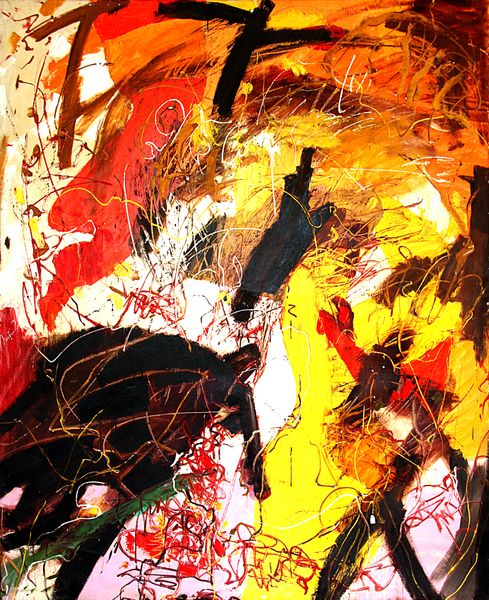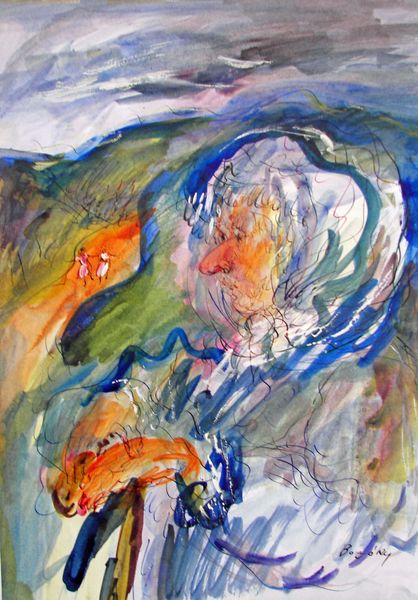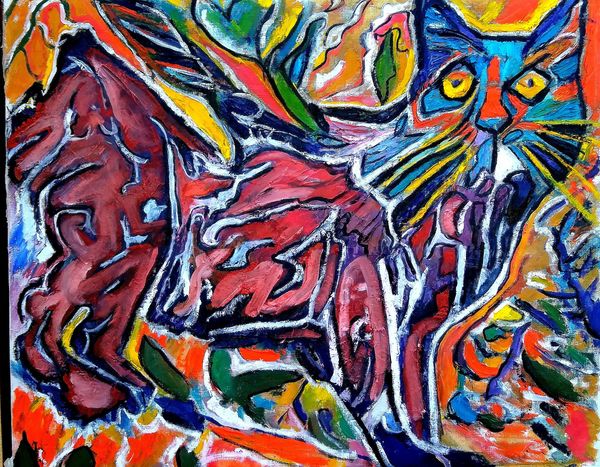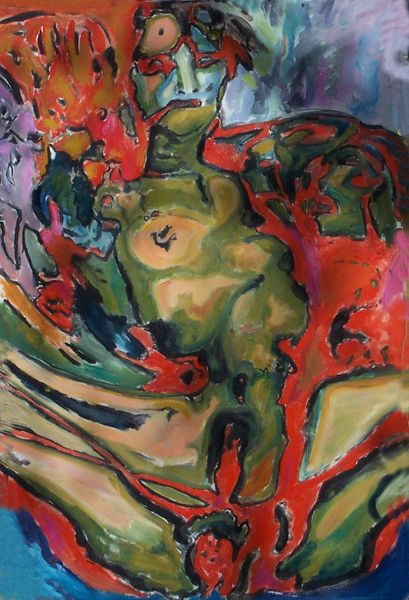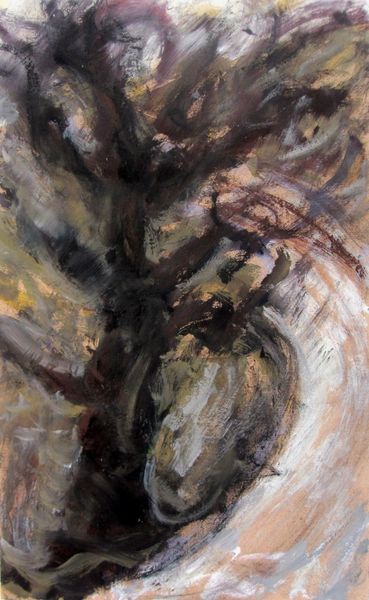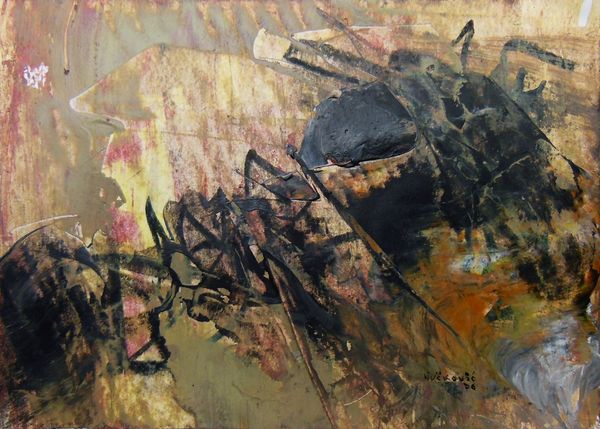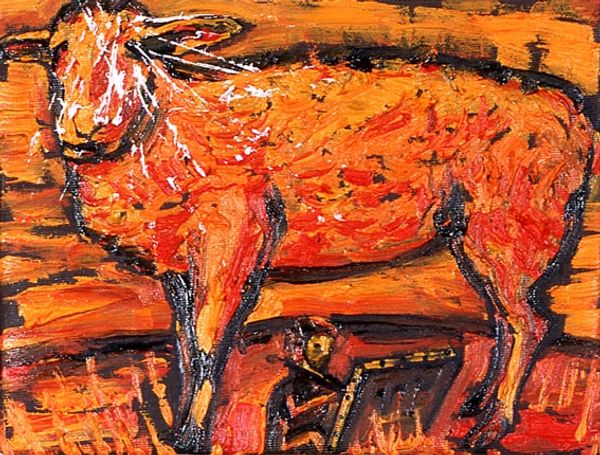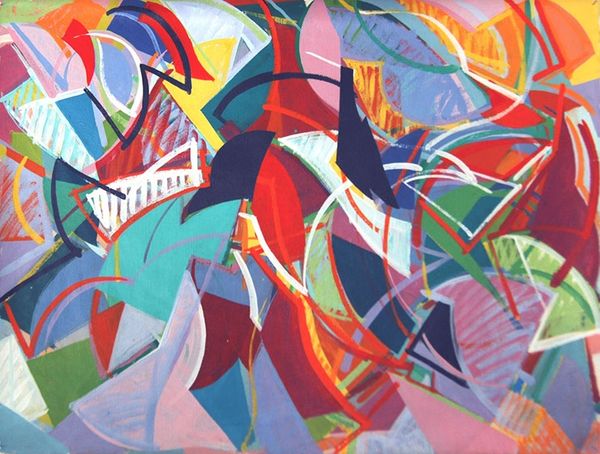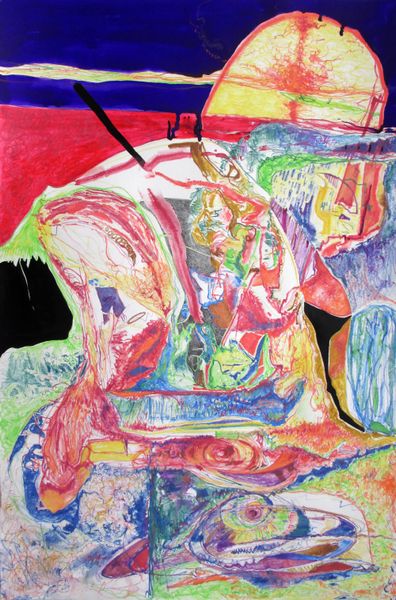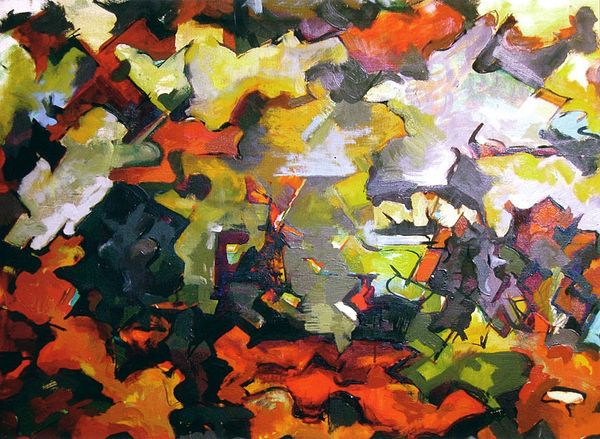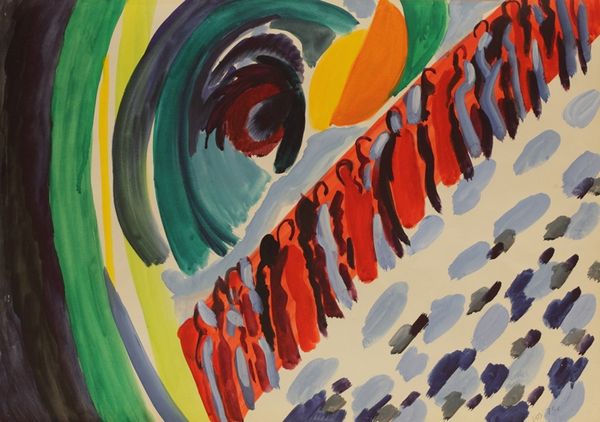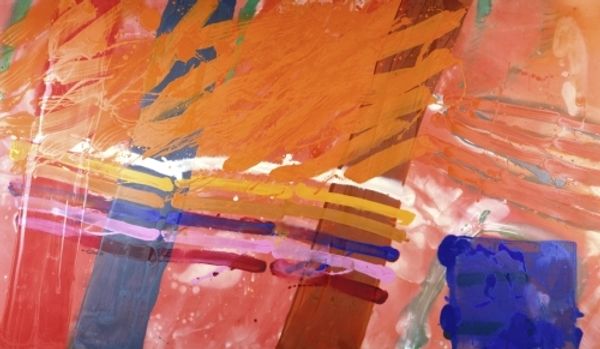
oil-paint
#
tree
#
oil-paint
#
vehicle
#
landscape
#
german-expressionism
#
oil painting
#
road
#
plant
#
expressionism
#
expressionist
Dimensions: 70 x 61 cm
Copyright: Public domain
Curator: Ernst Ludwig Kirchner's 1916 oil painting, "Railways in the Taunus," offers a startling, vibrant scene. Editor: My immediate response is one of dynamism and almost aggressive energy. The stark reds and blues fight for dominance, creating a sense of unease amidst what should be a serene landscape. Curator: Indeed. Look at how Kirchner has depicted the railway line, snaking through the landscape like a manufactured object, almost devouring the natural scene. It’s not just about scenery; it is about the effect of industry upon the natural landscape, and all of its inherent materialism. Editor: I see something else at play, too. Notice the way the architecture in the background mirrors forms found in the landscape – how the jagged rooftops repeat the silhouettes of the mountains. To me, this evokes a potent symbolism: the blending of human constructions and our yearning to leave a mark, intertwined with nature. It creates a potent psychological landscape. Curator: Perhaps. I can’t dismiss the tangible realities of the era in which the piece was produced. Kirchner, like many of his Expressionist contemporaries, was deeply concerned with modernity. Here, we have oil paint rendered into almost violent patterns, mirroring an increasingly aggressive and industrious European culture rapidly shifting from pre-industrial values. Editor: Yet, the palette isn't uniformly cold or clinical. There’s a strange warmth emanating from those fierce reds, isn’t there? Maybe a desire to capture some enduring, innate power—almost primitive, even within industrial transformation. Consider the symbolism inherent to this image in regards to industry consuming the land like a predatory beast. Curator: That "warmth," as you put it, may stem from the synthetic dyes used, the rapid industrialization of colour. Consider the historical context; it was, during the period of WWI, in times of political upheaval and industrial advancements. Kirchner highlights, through process and form, how man and industry are destroying landscape. Editor: So, in your perspective, the formal means point to production. However, it’s a deeper struggle, I think, rendered visible. The industrialization and the disruption can be said to signify the fragility of the human spirit and that sense of unease. A memory captured of an impending doom, reflected in our choices and changes made. Curator: I see it as a social statement and material response more. It embodies production as process—commentary on humanity’s increasing domination through labor and materiality. Editor: I think our differing takes offer an interesting tension. Mine’s informed more on how visual imagery echoes over time. I am thinking specifically, with the subject, as to how the railway has continued its domination throughout human culture. Curator: Precisely, the continued and persistent production has continued for decades. And what Kirchner presented holds true even now. Editor: A potent reminder, that endures on canvas.
Comments
No comments
Be the first to comment and join the conversation on the ultimate creative platform.
